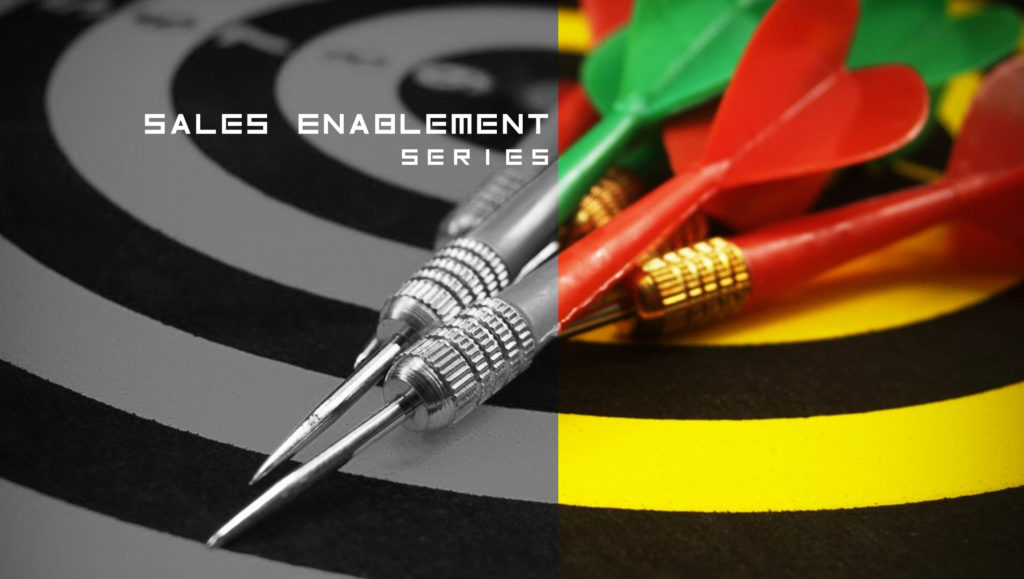The Foundation of a Solid Sales Enablement Model Depends on the Coaching and Training of Salespeople, Providing Them with Clear, Concise and Accurate Information
Over the last few years, we have seen many marketing and sales technologies, developed to help B2B sales reach their potential. In the flight of this incredible tech journey, automation leads the path to sales mastery. If you work in a sales team, chances are that you have heard enough about automation. However, there is one topic that is grabbing the eyeballs and turning heads among sales leaders. It’s Sales Enablement! This article is all about sales enablement tools and how despite its popularity as a trending B2B sales topic, there seems to be a certain degree of vagueness, or you could call it ambiguity, in how sales enablement is perceived.
With that in mind, we are setting out to lay a logical path to answer some basic questions about sales enablement and how it can accelerate your sales journeys.
- What is Sales Enablement for B2B?
- What can I achieve with Sales Enablement?
- Why is sales enablement so important today?
- What are the top sales enablement tools for the beginners?
- Where is sales enablement headed?
We will answer these questions, in our five-part series.
In this part, we define –
What is Sales Enablement for B2B?
Sales enablement prevents you from spraying Dairy lea darts. Yes, any organized content/ information that helps sales teams hit the bullseye is part of your sales enablement package. Straightforward, isn’t it!
Well, let’s give it a more scientific definition –
Sales enablement is the systematic process of establishing a clear sales framework for coherently researching, creating, organizing, analyzing, customizing, sharing and remodeling of information and content to help salespeople connect to customers and sell better.
The foundation of a solid sales enablement model depends on the coaching and training of salespeople, providing them with clear, concise and accurate information about everything regarding the sales process, data management, sales automation tools, and their customers. This accurate information and content help salespeople to successfully engage a buyer along the customer journey, equipped with powerful insights and predictive intelligence. The information and content could be created for any business-customer interaction based on the size, age, maturity and adoption of technology within the organization.
Can You Deploy Sales Enablement for B2B Sales Cycle?
The most ideal sales enablement content is easy to search, understand, adopt and deploy at any point along the sales cycle. It is also easy to reuse and remodel, regardless of how it used previously.
In a recent report from the Miller Heiman Group, roughly 60% of sales organizations have hired a sales enablement resource. This is a sizeable jump from the numbers in the last two years.
Here’s how the top B2B technology companies and research analysts define Sales Enablement –
“Sales enablement – It is 80% psychology and 20% mechanics.” This definition was hosted by Salesforce, the powerhouse of CRM and marketing analytics! Walter Rogers, CEO and Founder of Cloud Coaching International, explains how it’s all about synergy. “Open communication, aligning tools with an organization’s goals and managing what matters are pillars of sales enablement, especially if you opt to ride with your sales reps every month at least once. “
According to Randy Frisch, CMO of Uberflip, “Sales Enablement is putting your content into action. It is hyper-personalized, extremely relevant and visually appealing that sales could easily handpick content they need to close a deal.”
HubSpot says that “sales enablement is the technology, processes, and content that empower sales teams to sell efficiently at a higher velocity.” In the play of data, sales enablement tools help sales leadership train their resources to close the gap between reports and insights by delivering key technical insights on “what’s-hot, and what’s not” in their targeting campaigns.
Miller Heiman Group defines Sales enablement as a discipline. It says, “Sales enablement is a strategic, collaborative discipline designed to increase predictable sales results by providing consistent, scalable enablement services that allow customer-facing professionals and their managers to add value in every customer interaction.”
How do you Target Buyers with Sales Enablement for B2B?
TOPO defines sales enablement as the refined marketing-sales collaboration. For TOPO, sales is not as much as about selling as it is about knowing your buyers. It says, “The field of sales enablement is predicated on providing salespeople with what they need to engage their target buyers.”
Putting forward another credible definition, Roderick Jefferson, CEO at Roderick Jefferson & Associates, defines Sales Enablement as, “Getting the right people in the right conversations with the right decisions makers the right way.”
For Mike Kunkle, a leading sales enablement exponent, sales enablement starts with the general understanding of sales productivity or revenue per sales producer. In an interview, Mike exemplifies the critical aspect of successful sales enablement lies with a coherent ability to “collaborate across functions and align around initiatives that will produce improvements in sales productivity.”
In another featured interview to Membrain, Mike said what’s coming next for the Sales ecosystem. Mike’s prophecy is, “I see it (sales enablement industry), is moving away from task-focused, initiative management to a data-driven, analytical approach that is broader than the current approach and addresses other performance levers in the sales ecosystem.”
Conclusion
With so much happening under the hood for sales enablement for B2B, the field is wide open for the challenger and opportunists in the B2B sales tech ecosystem to benchmark strategies that are most likely to deliver best sales results in a shorter time.
For the rest of the year, until 2020, we are hoping to see sales enablement playing a bigger role in reversing the downward trends seen in sales revenue numbers in the past.




















